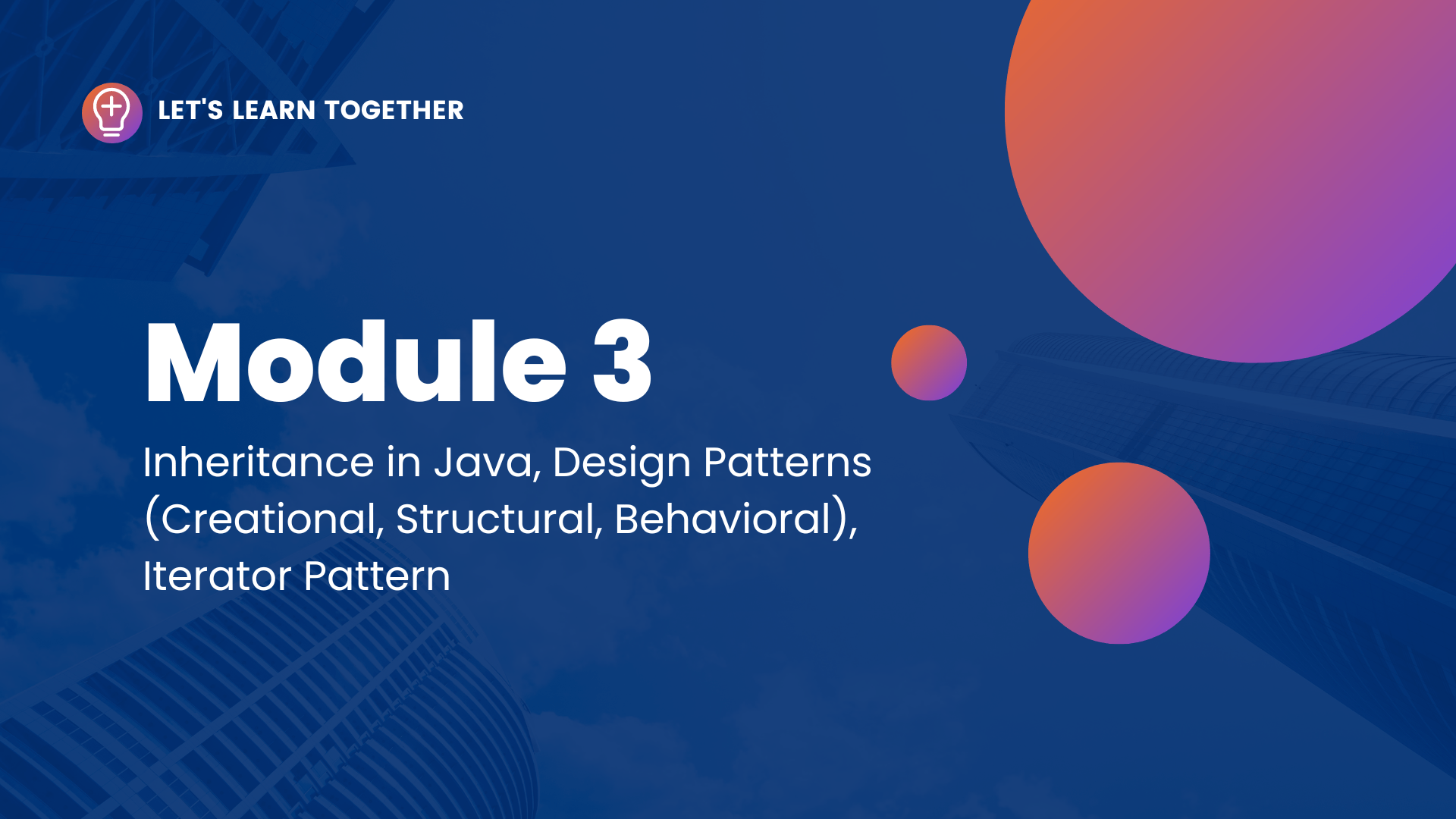Inheritance in JAVA

Inheritance
Inheritance is a fundamental concept in OO design where a class is based on another class, absorbing its attributes and behaviors and enhancing them. Inheritance allows programmers to create classes that are built upon existing classes, enabling code reusability and the addition of new features to existing code.
// A base class
class Animal {
void eat() {
System.out.println("Animal is eating...");
}
}
// A derived class
class Dog extends Animal {
void bark() {
System.out.println("Dog is barking...");
}
}
// Driver class
class Main {
public static void main(String[] args) {
Dog dog = new Dog();
dog.eat(); // from Animal class
dog.bark(); // from Dog class
}
}
In the above example, Dog is a derived class that inherits from the Animal base class. A Dog object can access the eat method of Animal and its own bark method.
Design Patterns
Design patterns are typical solutions to commonly occurring problems in software design. They represent the best practices used by experienced software developers. Design patterns are categorized into three groups: Creational, Structural, and Behavioral.
-
Creational Patterns: Provide a way to create objects while hiding the creation logic, rather than instantiating objects directly using a constructor. This gives the program more flexibility in deciding which objects need to be created for a given use case. Examples: Factory Method, Abstract Factory, Builder, Prototype, Singleton.
-
Structural Patterns: Concerned with class and object composition. They provide a manner to define relationships between classes or objects so that if one part changes, the impact on the overall structure will be minimal. Examples: Adapter, Bridge, Composite, Decorator, Facade, Flyweight, Proxy.
-
Behavioral Patterns: Concerned with the interaction and responsibility of objects. In other words, they focus on the communication between objects. Examples: Chain of Responsibility, Command, Interpreter, Iterator, Mediator, Memento, Observer, State, Strategy, Template Method, Visitor.
Iterator Pattern
The Iterator Pattern is a behavioral design pattern that provides a way to access the elements of an aggregate object sequentially without exposing its underlying representation. It involves two key components:
- Iterator: The ‘Iterator’ defines an interface for accessing and traversing elements.
- Concrete Iterator: The ‘ConcreteIterator’ implements the ‘Iterator’ interface and keeps track of the current position in the traversal of the aggregate.
Here is an example of how to use the Iterator Pattern in Java:
import java.util.Iterator;
import java.util.ArrayList;
class Main {
public static void main(String[] args) {
ArrayList<String> animals = new ArrayList<>();
animals.add("Dog");
animals.add("Cat");
animals.add("Horse");
Iterator<String> it = animals.iterator();
while(it.hasNext()) {
System.out.println(it.next());
}
}
}
In this code, ArrayList is the aggregate object and the Iterator object it is used to traverse through the elements. The hasNext method of the iterator object is used to ensure there is a next element, and the next method is used to move to the next element in the list.
In your examination, understanding these concepts and being able to provide code examples will demonstrate your grasp of OO design and the use of design patterns in Java.
Sharing is caring!